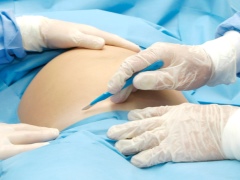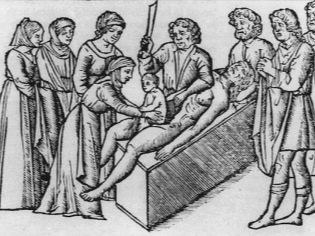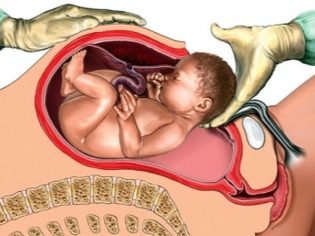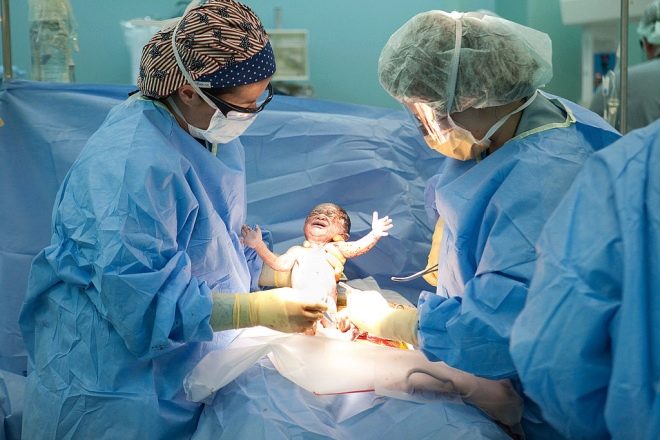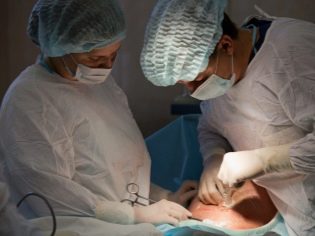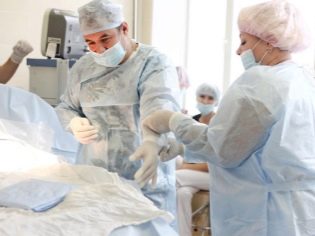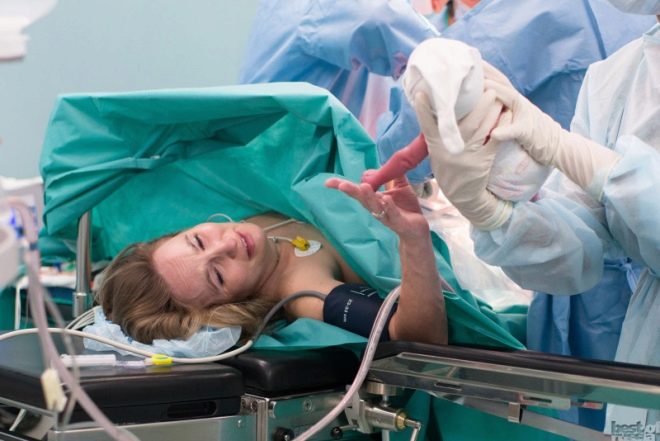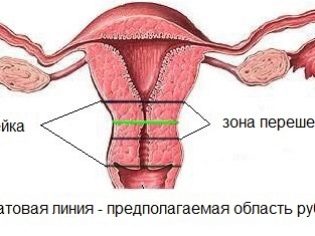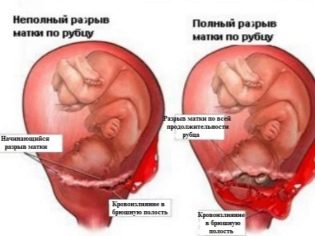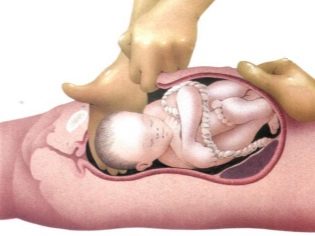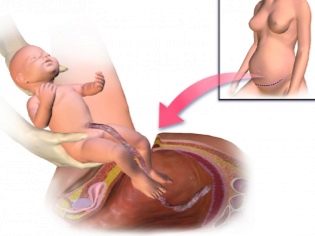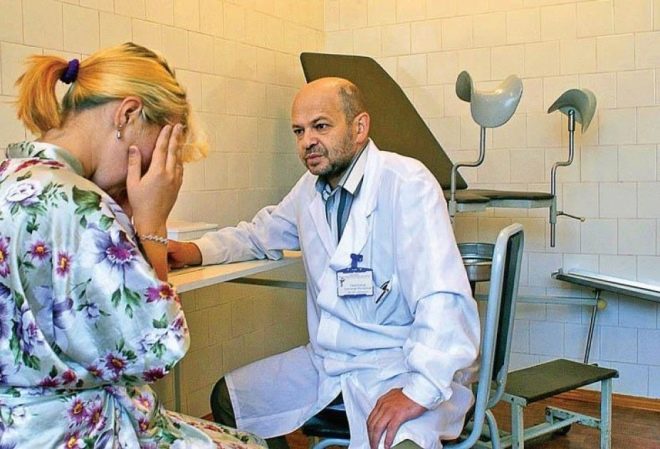How many times can a cesarean section be done?
Those days have long passed when it was believed that after a cesarean section, it is undesirable for a woman to give birth more, and even more so there was no question of how many times after such an operation you can repeat it. Nowadays, the attitude towards Cesarean section has changed, it is done more often, and more and more women think about the second or subsequent pregnancy after they became mothers thanks to the work of surgeons.
In this article, we will tell you how many times you can do a cesarean section.
About operation
Caesarean section ("royal incision" - translated from Latin) - is an alternative way of birth.
With the help of an incision on the anterior abdominal wall, the baby is removed from the uterus. He does not go through the birth canal, and the woman is not in pain. But with all the visible advantages, it is impossible to make a cesarean just like that, for example, because of the fear of childbirth in our country. For the operation must be strict indications.
The operation is one of the most ancient. Until the 16th century, cellosection was performed only for pregnant women who died in the hope of saving children. From the XVI century they began to try to do the surgery alive, but these attempts were not crowned with success, since it did not occur to surgeons of that time to sew the uterus, they were limited only to sutures on the peritoneum.
In the XIX century, they decided to reduce maternal mortality and began to remove the uterus after the operation to remove the child, and then they learned how to stitch it up, which gradually enabled the woman not only to survive after the operation, but also to dream about the next children.
Indications
Indications for surgery are:
- narrow pelvis and a clear discrepancy between the size of the fetus and the size of the pelvis of a pregnant woman;
- placenta previa when the “baby seat” overlaps the inner throat, making it difficult for the child to exit during natural childbirth;
- the presence of uterine fibroids;
- the presence of scars on the uterus (from previous operations for any purpose) that threaten to rupture the reproductive organ during contractions;
- diseases of women in which natural childbirth is contraindicated (especially cardiovascular, kidney disease, retinal detachment and myopia);
- the presence of preeclampsia;
- improper location of the fetus in the uterus (pelvic or longitudinal);
- multiple pregnancy (not always);
- high water flow;
- genital herpes (so that the baby is not in contact with herpes infection during the passage through the genital tract).
According to all these indications, the operation will be done in a planned manner. There are also emergency indications, in this case the operation will be referred to as an emergency cesarean section.
It is carried out when a woman has a weakness of labor forces at any stage of labor, if medication stimulation has been ineffective. Also, an operation will be urgently performed with signs of fetal hypoxia, with a threatened uterine rupture in the labor process.
The operation is performed under general anesthesia or epidural anesthesia. In the first case, the woman is in a deep medical sleep, and in the second, she is simply deprived of sensitivity in the lower half of the body.
For whatever reason, a caesarean section was performed, a woman may soon have a question about when she can become a mother again and whether she can give birth on her own. We will try to give answers to these questions.
When can you get pregnant?
A woman after caesarean section can become pregnant after the same time as after natural childbirth. Physiology is such that a new pregnancy will be possible with the normalization of the menstrual cycle.
Usually during the period of breastfeeding in women comes the so-called postpartum natural sterility. But pregnancy and during breastfeeding is possible.
Especially well need to learn this after cesarean section. A woman is not recommended to become pregnant for 2 years. This period is needed to restore the body after surgery, as well as to heal the scar on the uterus remaining after surgery.
The main danger is precisely the failure of the scar, which creates the possibility of uterine rupture.
During pregnancy, the reproductive organ increases almost 500 times. Surgeons, of course, try to make an incision in the lower uterine segment, which is least susceptible to stretching as the uterus grows, but the probability of rupture exists. Often it leads to the development of massive bleeding and death of the pregnant woman and the fetus.
It takes at least two years to form the most elastic fabric in the scar area.
If the pregnancy comes earlier, in addition to the risk of uterine rupture, it can cause other troubles. Often it is the main cause in the development of low placenta prevalence, placental insufficiency during subsequent pregnancy, the risk of cervical insufficiency increases. Women who become pregnant too early after surgery, face the threat of miscarriage, with intrauterine growth retardation of the baby.
In addition to pregnancy, no surgical intervention on the uterus or curettage is recommended during the two-year period after the operation. Therefore, the woman should pay close attention to contraception.
How many operations can be done?
The answer to this question may surprise you. But a woman can make a cesarean section as many times as necessary.
Each subsequent operation is performed on the previous scar. After removing the baby from the uterus, surgeons excise the old scar and impose new stitches. For this reason, each subsequent scar is somewhat thinner than the previous one, which means that each subsequent pregnancy is a more risky business than the previous one.
In the USSR, it was not recommended to become pregnant again after cesarean section. Doctors discouraged women from such a decision, not because they did not know how to do repeated surgeries on the old scar, but because the technology and suture material were different, the scars were rough and the risk of their discrepancies during repeated pregnancy was high.
By the end of the last century, doctors pointed out to women who had the opportunity to give birth through surgery to the possibility of having another child, but not earlier than after 3 years. In the "zero" tacitly allowed three operations. Until recently, this number was considered the only possible, extreme.
Before the third cesarean section and today, women doctors are offered to consider the possibility of surgical sterilization in order to theoretically exclude the possibility of the next pregnancy. Many agree. But those who do not sign such consent sometimes come for the fourth child.
Fourth and even fifth Cesarean today especially nobody will be surprised. Victoria Beckham performed 4 operations, and Angelina Jolie - three. By the way, the author of this article also made four cesarean sections and does not regret it at all.
How many times can a cesarean be made? It is up to the woman herself and her doctor to decide who will assess the patient's age, her state of health, the state of the scar after the previous operation, the associated risks.
If you are lucky with the doctor, he will always find the right words to encourage the woman. If you are unlucky (and this is so far, according to reviews, it occurs often), a woman will be actively discouraged from female childbirth after a second cesarean section.
Observing a pregnant woman after 2, 3, 4 operations on the uterus in history is a big risk. If something happens to her, the doctor will be personally liable. That is why the woman begins to tell the horrors of a thin scar, unsightly prospects for the gap. Uterine ruptures are rare. And abortions due to fear of rupture, unfortunately, often.
Planning for pregnancy after the COP
Proper lifestyle and attitude to their health will help a woman as best as possible to prepare for the next pregnancy. Here are some simple tips to follow if you want to become a mother again (or two, or three):
- after surgery for 3 months should refrain from physical exertion, weight lifting over 2 kilograms in weight;
- sex life you can begin to live after the bloody discharge from the genitals;
- the first month is better to use barrier contraceptives, and when the menstrual cycle is normalized, you should consult a gynecologist for the choice of any other method, with the exception of the intrauterine device;
- after 2 years, which are required for full rehabilitation after the operation, the woman should consult a gynecologist, pass all tests, make smears, as well as pelvic ultrasound, and hysteroscopy to assess the scar.
How the Cesarean section passes, look in the following video.
